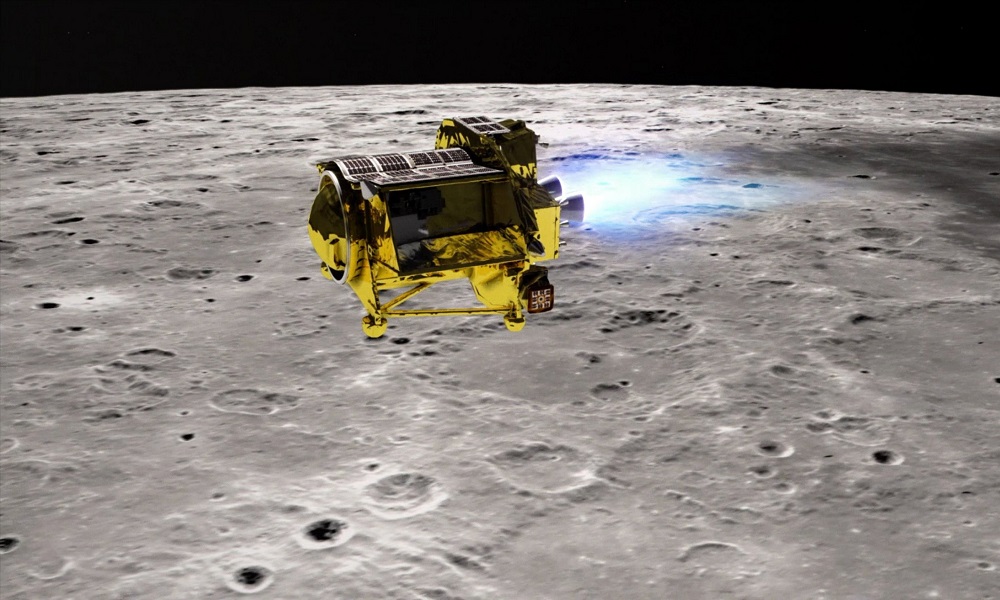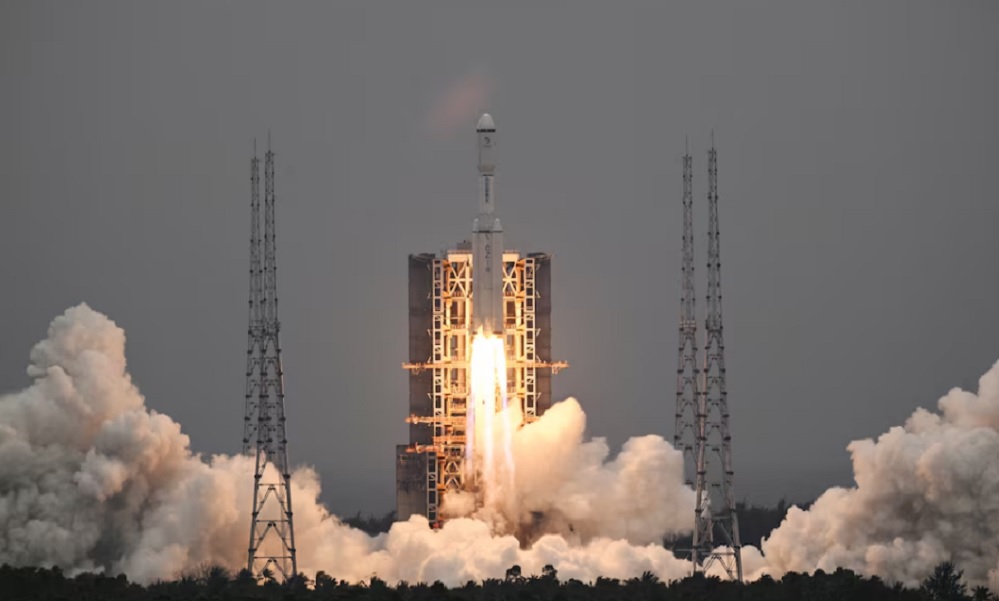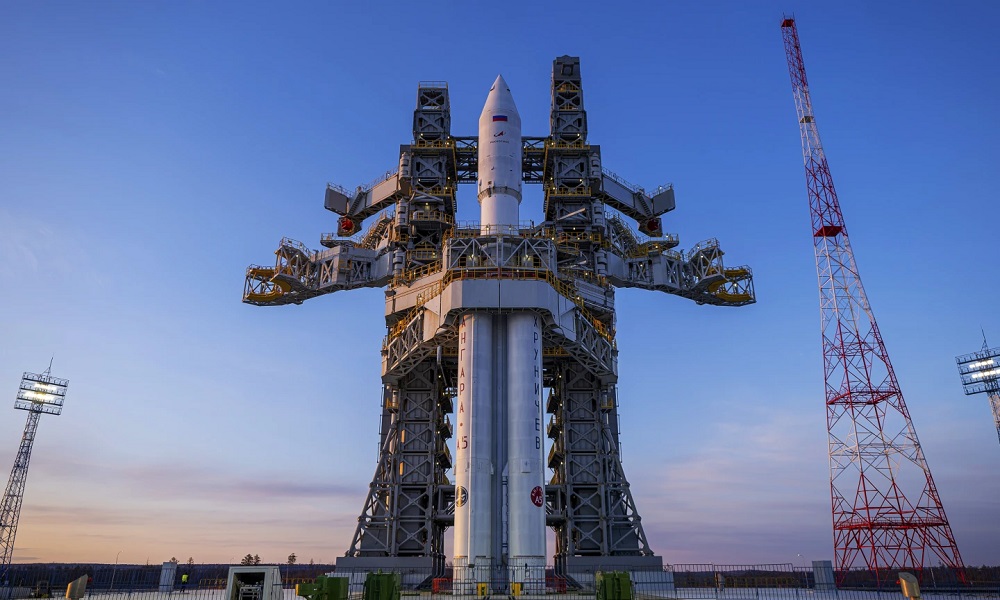Science & Technology
Japan’s SLIM spacecraft lands on moon, a first for the country

Japan on Saturday became the fifth country to put a spacecraft on the moon, but solar power issues threatened to cut short the nation’s mission to prove a “precision” landing technology and revitalise a space programme that has suffered setbacks.
The Japan Aerospace Exploration Agency (JAXA) said its Smart Lander for Investigating Moon (SLIM) landed the moon’s surface at around 12:20 a.m. (1520 GMT Friday), but its solar panels were not able to generate electricity, possibly because they are angled wrong, Reuters reported.
JAXA prioritised the transfer of SLIM’s data to earth as the probe relied only on its battery, which would last for “a few hours” despite “life-sustaining treatments” such as turning off its heater, Hitoshi Kuninaka, the head of JAXA’s research centre, told a press conference.
JAXA will maintain the status quo rather than take risky actions and hopes a shift in the sunlight’s angle will hit the panels in a way that can restore its functions, he added.
“It takes 30 days for the solar angle to change on the moon,” Kuninaka said. “So when the solar direction changes, and the light shines from a different direction, the light could end up hitting the solar cell.”
Signal from the SLIM was lost, data from NASA’s Deep Space Network showed. It was not immediately clear whether the signal loss was temporary or a power-saving measure.
Dubbed the “moon sniper”, SLIM attempted to land within 100 metres (328 feet) of its target, versus the conventional accuracy of several kilometres, a technology JAXA says will become a powerful tool in future exploration of hilly moon poles seen as a potential source of oxygen, fuel and water.
“Looking at the trace data, SLIM most certainly achieved a landing with 100-metre accuracy,” Kuninaka said, although adding it will take about a month to verify it.
Japan is increasingly looking to play a bigger role in space, partnering with ally the United States to counter China. Japan is also home to several private-sector space startups and the JAXA aims to send an astronaut to the moon as part of NASA’s Artemis program in the next few years.
But the Japanese space agency has recently faced multiple setbacks in rocket development, including the launch failure in March of its new flagship rocket H3 that was meant to match cost-competitiveness against commercial rocket providers like SpaceX.
The failure caused widespread delays in Japan’s space missions, including SLIM and a joint lunar exploration with India, which in August made a historic touchdown on the moon’s south pole with its Chandrayaan-3 probe.
JAXA has twice landed on small asteroids, but unlike with an asteroid landing, the moon’s gravity means the lander cannot pull up for another try, its scientists said. Three lunar missions by Japanese startup ispace, Russia’s space agency and American company Astrobotic have failed in the past year.
In Sagamihara, a Tokyo suburb where JAXA’s control centre is located, about 80 people gathered at a city hall for the public viewing of the midnight landing.
“There has been a series of launch failures (of JAXA’s rockets) so I really wanted this to succeed,” said Toshie Yamamoto, an office worker in her 50s.
There was a tense atmosphere during the descent sequence, but they broke into applause when SLIM’s landing on the moon was announced.
Only four nations – the former Soviet Union, the United States, China and India – and no private company had achieved a soft landing on the moon’s surface.
Science & Technology
Apple loses top phonemaker spot to Samsung as iPhone shipments drop, IDC says

Apple’s (AAPL.O), opens new tab smartphone shipments dropped about 10% in the first quarter of 2024, hurt by intensifying competition by Android smartphone makers aiming for the top spot, data from research firm IDC showed on Sunday.
Global smartphone shipments increased 7.8% to 289.4 million units during January-March, with Samsung (005930.KS), opens new tab, at 20.8% market share, clinching the top phonemaker spot from Apple, Reuters reported.
The iPhone-maker’s steep sales decline comes after its strong performance in the December quarter when it overtook Samsung as the world’s No.1 phone maker. It’s back to the second spot, with 17.3% market share, as Chinese brands such as Huawei gain market share.
Xiaomi, one of China’s top smartphone makers, occupied the third position with a market share of 14.1% during the first quarter, read the report.
South Korea’s Samsung, which launched its latest flagship smartphone lineup – Galaxy S24 series – in the beginning of the year, shipped more than 60 million phones during the period.
Global sales of Galaxy S24 smartphones jumped 8%, compared to last year’s Galaxy S23 series during their first three weeks of availability, data provider Counterpoint previously said.
In the first quarter, Apple shipped 50.1 million iPhones, down from 55.4 million units it shipped same period last year, according to IDC.
Apple’s smartphone shipments in China shrank 2.1% in the final quarter of 2023 from a year earlier.
The drop underscores the challenges facing the U.S. firm in its third biggest market, as some Chinese companies and government agencies limit employees’ use of Apple devices, a measure that mirrors U.S. government restrictions on Chinese apps on security grounds.
The Cupertino, California-based company in June will hold its Worldwide Developers Conference (WWDC), where it will highlight updates to the software powering iPhones, iPads, and other Apple devices.
Investors are closely watching for updates on artificial intelligence development at Apple, which has so far spoken little about incorporating the AI technology into its devices. The company earlier this year lost the crown as the world’s most valuable company to Microsoft (MSFT.O), opens new tab, Reuters reported.
Science & Technology
China launch of relay satellite Queqiao-2 for lunar probe mission successful

China National Space Administration (CNSA) said on Friday its launch of a key signal relay satellite was a “complete success” and it would serve as the communication bridge for its future lunar probe missions for years to come, state media reported.
China launched the satellite Queqiao-2, which was named after a mythological bridge made of magpies, and two miniature satellites, Tiandu-1 and Tiandu-2, on March 20.
Queqiao-2 will be used as a communications bridge between the ground operations on earth and upcoming lunar probe missions on the far side of the moon until at least 2030.
The moon’s near side always faces earth. That means data transfers from the far side are impossible because there is no direct line of sight.
Queqiao-2 researcher and developer Xiong Liang described the satellite as “the main switch” of the whole fourth phase of lunar missions, according to state television CCTV.
“Only when the main switch is flipped on, all the communications can kick off,” Xiong said.
Queqiao-2 will orbit the moon and relay signals to and from the Chang’e-6 mission, which expected to be launched in May. The robotic Chang’e-6 probe will seek to retrieve samples from an ancient basin, acquiring lunar material from the moon’s hidden side for the first time.
Queqiao-2 will also be used as a relay platform for the Chang’e-7 lunar mission in 2026 and the Chang’e-8 mission in 2028.
The functions and performance of Queqiao-2 met mission requirements and it will be able to provide relay communication services for China’s lunar exploration projects and future lunar missions for China and other countries, said the CNSA, according to CCTV.
Queqiao-2 entered its targeted elliptical orbit on April 2 after a correction midway, near-moon braking and orbital manoeuvre around the moon, CNSA said.
The satellite has successfully communicated with Chang’e 4, which was the first spacecraft to perform a soft landing on the far side of the moon and is still carrying out its exploration mission. It also communicated with the Chang’e-6 probe while it is still on the ground earlier this month.
The successful launch of Queqiao-2 comes after the failed launch of another lunar spacecraft DRO-A/B satellites, which was intended to enter the moon’s distant retrograde orbit (DRO).
China has not released any information on whether or not the satellites can be retrieved.
(Reuters)
Science & Technology
Russia aborts planned test launch of new heavy-lift space rocket

Russian space officials on Tuesday aborted the test launch of a new heavy-lift rocket from its far-eastern launch pad.
The Angara-A5 rocket was scheduled to lift off from the Vostochny space launch facility at 0900 GMT Tuesday, but the launch was aborted two minutes before, AP reported.
Yuri Borisov, head of Roscosmos state space corporation, said the automatic safety system canceled the launch after registering a flaw in the oxidizer tank pressurization system.
He said the next launch attempt was set for Wednesday.
Tuesday’s launch was to be the fourth for the Angara-A5, a heavy-lift version of the new Angara family of rockets that has been developed to replace the Soviet-designed Proton rockets.
-

 World5 days ago
World5 days agoNorth Korea officials visit Iran in a rare public trip
-

 Sport4 days ago
Sport4 days ago‘Serious talent’ Fraser-McGurk bonds with Warner to light up IPL
-

 Latest News4 days ago
Latest News4 days agoOver 1,000 Afghan refugees forced out of Pakistan in one day
-

 Sport2 days ago
Sport2 days agoAfghanistan beat Iraq 5-3, inch closer to Futsal World Cup berth
-

 Regional2 days ago
Regional2 days agoNew UK sanctions target Iranian drone industry
-

 Regional3 days ago
Regional3 days agoTurkey accuses U.S. of double standards over Gaza in rights report
-

 Latest News2 days ago
Latest News2 days agoEU allocates 17 million euros to support Afghans on the move
-

 Latest News2 days ago
Latest News2 days agoPakistan extends registered Afghan refugees’ stay till June 30
























